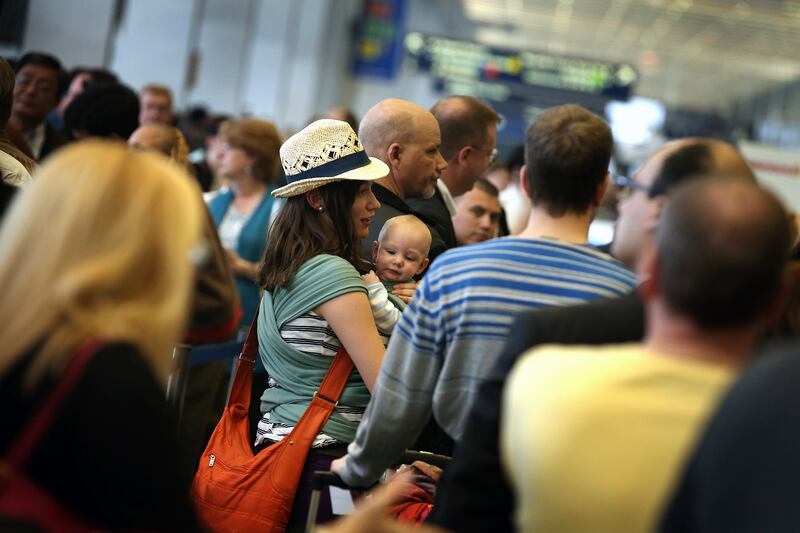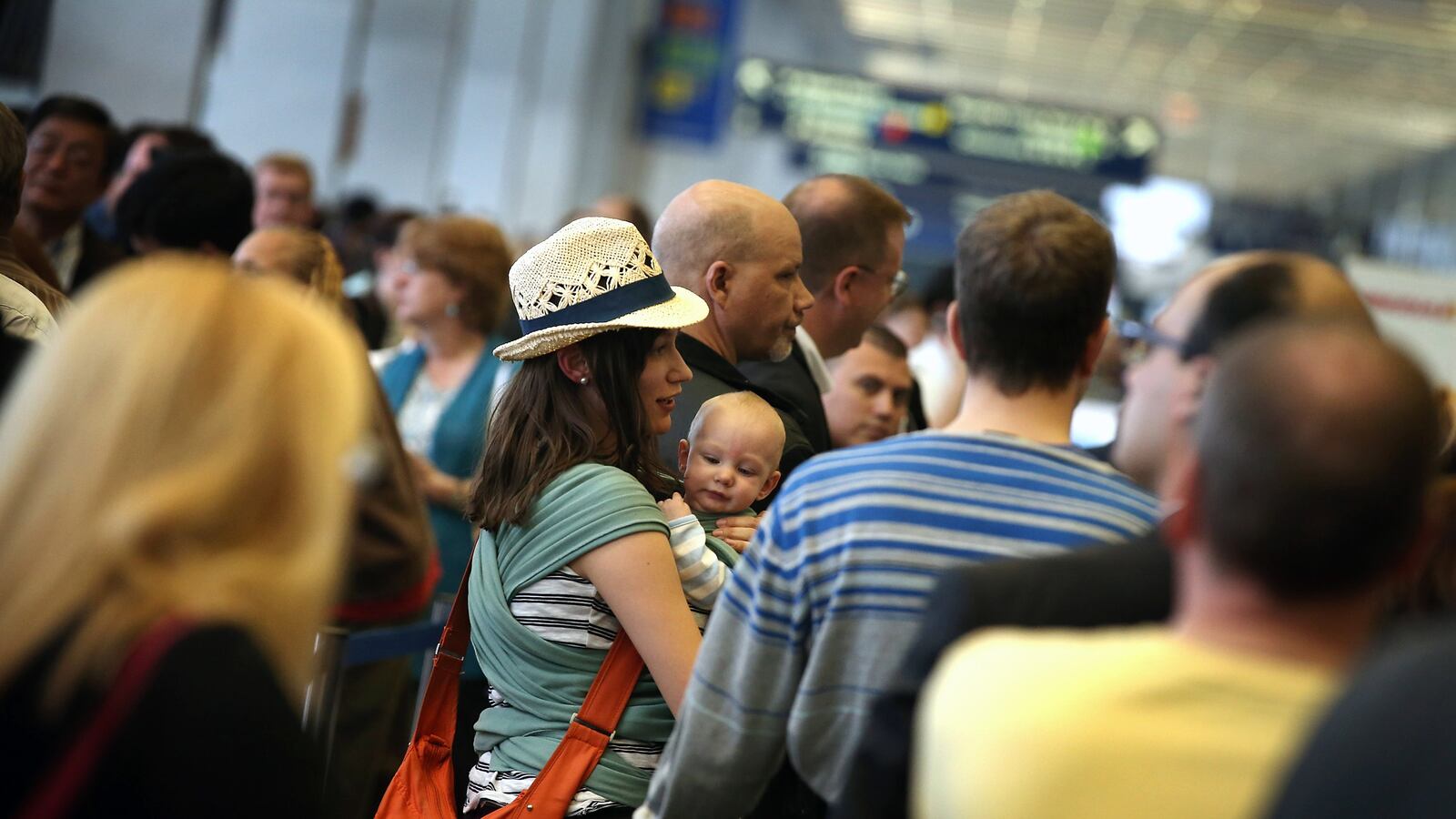It’s summer tourism season and there’s some bad news.
Flying this summer is going to be more of a hassle than it has been in recent years. Why? Airlines have gotten smarter and the economy has improved.

After years of losses and ruinous competition, airlines in recent years have gotten religion about controlling costs and managing assets. They’ve merged, shut down unprofitable routes, and used information technology to get a better handle on everything from luggage to filling seats. Good for them.
The result is that planes are simply more crowded. Ten years ago, the load factor—the percentage of seats actually occupied—was generally in the mid-70 percentages. The load factor has climbed steadily over the past decade—to 83 percent in 2011. As the Bureau of Transportation Statistics reported, in February, the most recent month for which numbers are available, “The system load factor of 79.2 percent, the domestic load factor of 81.0 percent, and the international load factor of 75.8 percent were record highs for the month of February.” That means your flight is more likely to be crowded, totally booked, or overbooked, that your ability to go standby or get an upgrade will be degraded, and that the prospects of getting stuck in a middle seat between a screaming baby and a person of size are substantially greater. By the time you do get on board, it will more likely that the overhead compartments will be full and you’ll have to check the bag.
Also, the airports will be busier. The economic expansion is about to hits its four-year anniversary. More people are working. Foreign tourists continue to flood into the U.S., and business travel is on the rebound. Translation: longer lines at security. The trade group Airlines for America projected in its annual forecast this month that between June 1 and August 31, the U.S. aviation system will move 208.7 million people, up 1 percent from last year, and the busiest summer season since 2008.
To make matters worse, the system is pushing more people through the same creaky infrastructure. It’s not like there are a lot of new airports opening this year. Airlines are ordering new planes, but they’re slow to arrive. And routes are still being shut down. There are simply fewer takeoffs: the number of flights fell 2 percent to 9.821 million in 2012. Through the first two months of 2013, the number of flights in the U.S. was down 4 percent from the same period in 2012. Total available seat miles in 2011 were a few percentage points lower than in 2007.
Of course, this is how markets should work. Supply is aligning itself with demand. But at the margins, it means more flights are overcrowded. The industry notes that the incidence of “involuntary denied boardings” in the first quarter of 2013 was 1.06 per 10,000 passengers, slightly higher than in 2011 and 2012. And when demand starts to catch up with supply, prices tend to rise. The Airline Association doesn’t forecast prices. But based on my personal usage—about 12 round trips per year—prices certainly seem to be up. This government report shows that average fares rose about 10 percent between 2009 and 2012.
Finally, there’s the weather. Summer tends to bring thunderstorms, cyclones, and, eventually, hurricanes. We know that conditions are becoming more volatile. And with less idle capacity sitting around, and with a higher level of interconnectedness in the industry—the crew operating your flight from New York to Washington may have just got off a flight from Chicago to New York—there’s less margin for error. Delays or cancellations in an isolated geographic area can quickly ripple through the system.
Of course, some aspects have air travel have improved. When you reach your destination this summer, your luggage will be much more likely to be there. After realizing it costs them a few hundred dollars each time they lose a bag, airlines have engineered an impressive reduction in the incidence of lost luggage. The rate of “mishandled bags” have plummeted from 7.05 per 1,000 passengers in 2007 to 3.15 per 1,000 in the first quarter of 2013. Meanwhile, new apps are delivering more real-time information on flight status, the food in the terminals is getting much better, and WiFi is available on an increasing number of planes. At the end of the day, as Louis C.K., notes in this riff, you’re sitting in a chair in the sky!




